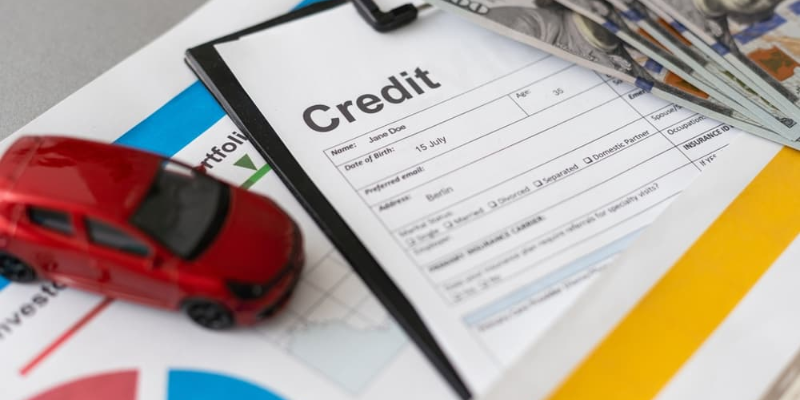Securing a vehicle often involves financing, transforming the dream of a new car into a tangible reality. However, this financial arrangement introduces a critical component that many prospective owners may overlook: car insurance for financed car. Beyond the excitement of driving off the lot, understanding the intricate requirements and strategic implications of insuring a financed vehicle is paramount for safeguarding your investment and maintaining financial stability. In this article, Goldnews24h will accompany you to explore the essential facets of car insurance when your vehicle is financed, offering professional insights to help you make informed and disciplined decisions in an often-complex market.
Understanding the fundamentals of car insurance for financed car

When you finance a car, you are not the sole owner; the lender holds a significant financial interest, or lien, on the vehicle until the loan is fully repaid. This fundamental dynamic dictates specific insurance requirements that extend beyond state-mandated minimums. Lenders require robust coverage to protect their asset against potential damage, theft, or total loss, ensuring they can recover their investment regardless of unforeseen circumstances. Typically, this means a requirement for “full coverage,” which combines liability, comprehensive, and collision insurance. Without adequate car insurance for financed car, you risk not only violating your loan agreement but also facing severe financial repercussions if your vehicle is damaged or totaled, potentially leaving you responsible for loan payments on a car you can no longer drive.
The distinction between minimum state requirements and lender requirements is crucial. While states primarily mandate liability coverage to protect other drivers and their property in an at-fault accident, lenders demand more extensive protection for the financed vehicle itself. This comprehensive approach ensures that both the borrower and the lender are protected against the financial impact of various incidents. Should you fail to maintain the required coverage, your lender has the right to purchase “force-placed” insurance on your behalf, often at a significantly higher cost, and add those premiums directly to your loan payments. This highlights the importance of proactive engagement with your insurance policy.
Key coverage types for a financed vehicle

When navigating the insurance landscape for a financed vehicle, several coverage types become non-negotiable, particularly for satisfying lender requirements. These essential coverages form the bedrock of protection for your automotive asset and your financial well-being. Understanding each component is vital for securing appropriate coverage and avoiding potential financial pitfalls.
Comprehensive coverage explained
Comprehensive coverage is designed to protect your vehicle. This includes a wide array of non-collision events such as theft, vandalism, fire, natural disasters like floods or hail, and even damage, this coverage is critical because it shields the lender’s investment, is around $2,301 to $2,697, or about $192 to $225. It ensures that if your car is stolen or suffers significant non-collision damage, the repair or replacement costs are covered, preventing you.
Collision coverage explained
Collision coverage steps in to pay for damage to your own vehicle resulting, if you were involved in an at-fault accident and your car was severely damaged, you would still be obligated to pay off the remainder of your car loan, even if the vehicle was a complete loss and unrepairable. The presence of collision coverage ensures that the physical damage to the car is addressed, allowing for repairs or providing funds for replacement, thereby protecting both your ability to drive and the lender’s asset.
Gap insurance: crucial for financed cars
One of the most critical, yet often misunderstood, coverages for a financed vehicle is Guaranteed Asset Protection, or “gap” insurance. When you drive a new car off the lot, its value immediately begins to depreciate, often losing around 11% of its value instantly and up to 19% by the end of the first year. This rapid depreciation means that if your financed car is totaled or stolen early in your loan term, the actual cash value (ACV) that your comprehensive or collision insurance pays out might be significantly less than the outstanding balance on your loan.
Gap insurance bridges this “gap” by covering the difference between the insurance payout (ACV) and the remaining loan balance, preventing you from being financially “upside down” on a vehicle you no longer possess. Many lenders strongly recommend or even require gap insurance, recognizing the substantial financial risk that depreciation poses to their investment and your financial security. This coverage is an invaluable safeguard, offering peace of mind by eliminating the risk of paying off a loan for a car that no longer exists.
Factors influencing your car insurance premium

The cost of car insurance for financed car is not a static figure; it is a dynamic calculation influenced by a multitude of factors, ranging.
Driver profile
Your personal driving history and demographic details play a substantial role in determining your insurance premiums. Insurers assess risk based on factors such as your age, with younger drivers (under 25) typically facing higher rates due to limited experience and a perceived higher propensity for risky driving. Conversely, drivers between 30 and 55 often benefit. Your driving record is paramount; a history of accidents, traffic violations (like speeding tickets or DUIs), or frequent claims will lead to significantly higher premiums, as these indicate a higher risk to the insurer. Additionally, your credit score can influence rates in many states, with those possessing poor credit often paying substantially more for coverage. Marital status can also be a factor, with married individuals sometimes receiving lower rates.
Vehicle type
The make, model, and year of your financed car significantly impact your insurance costs. More expensive vehicles generally lead to higher premiums because they cost more to repair or replace. Similarly, sports cars or high-performance vehicles, which are statistically more prone to accidents and theft, often come with elevated insurance rates. The safety features integrated into your vehicle can, however, work in your favor. Cars equipped with advanced safety technologies like airbags, anti-lock brakes, and robust anti-theft systems may qualify for discounts, as these features reduce the likelihood of accidents or theft, and thus the insurer’s payout risk. Furthermore, the availability and cost of parts for repairs also factor into the premium calculation, with common models often being chea.
Location
Where you live and where you primarily drive your car directly impacts your insurance premium. Urban areas, characterized by higher population density, increased traffic congestion, and greater crime rates, typically incur higher insurance costs due to the elevated risk of accidents, theft, or vandalism. Conversely, drivers residing in smaller towns or rural areas often benefit, the cost of your car insurance for financed car.
Deductibles and coverage limits
The choices you make regarding your deductibles and coverage limits directly affect your premium. A deductible is the amount you agree to pay out-of-pocket before your insurance coverage kicks in for a claim. Opting for a higher deductible typically results in a lower premium, as you are assuming more of the initial financial risk. Conversely, a lower deductible means higher premiums. Similarly, higher coverage limits, while offering greater protection, will increase your premium, as they represent a larger potential payout for the insurer. Lenders often impose specific deductible limits for financed vehicles, typically capped between $500 and $1,000, to ensure that the car can be repaired after an incident without undue financial strain on the borrower. Balancing affordability with adequate protection, while adhering to lender requirements, is a key consideration in managing the cost of your car insurance for financed car.
Strategic approaches to reduce car insurance costs
While lender requirements for car insurance for financed car can seem substantial, there are numerous strategic approaches to help manage and potentially reduce your premium costs without compromising essential coverage. A disciplined approach to your insurance choices can yield significant savings over the life of your loan.
Shopping around
One of the most effective ways to secure a competitive rate is to shop around and compare quotes, especially when your policy is up for renewal or if there’s been a change in your driving record or vehicle. Utilizing online comparison tools or working with an independent insurance agent can streamline this process, ensuring you find the most favorable rates that still meet your lender’s requirements for your car insurance for financed car.
Bundling policies
Many insurance companies offer discounts to customers who bundle multiple policies, such as combining your auto insurance with homeowner’s, renter’s, or even other vehicle insurance policies. These multi-policy discounts can lead to substantial savings, often ranging from 10% to 25% on premiums. This strategy not only simplifies your insurance management by consolidating policies with a single provider but also presents a compelling financial incentive to review your entire insurance portfolio. Goldnews24h encourages exploring bundling options to maximize your savings across all your insurance needs.
Increasing deductibles (with caution)
As previously discussed, increasing your deductible—the out-of-pocket amount you pay before your insurance covers a claim—can lower your annual premium. For example, raising your deductible from $200 to $500 could reduce collision and comprehensive costs by 15% to 30%. However, this strategy requires careful consideration. While a higher deductible reduces your premium, it also means you will pay more out of pocket if you file a claim. It is crucial to ensure you have sufficient emergency savings to cover the higher deductible amount comfortably should an incident occur. Always confirm that any increase in deductibles aligns with your lender’s specific requirements for your car insurance for financed car.
Utilizing discounts
Insurance companies offer a wide array of discounts that many drivers overlook. Proactively inquiring about and qualifying for these can significantly reduce your costs. Common discounts include those for maintaining a good driving record (no accidents or violations for a certain period), completing a defensive driving course, having anti-theft devices installed in your vehicle, or being a low-mileage driver. Other potential discounts might be available for students with good grades, setting up automatic payments, or paying your premium in full annually. Regularly reviewing your policy with your agent and asking about all available discounts can uncover substantial savings for your car insurance for financed car.
Reviewing policies regularly
The financial landscape, your personal circumstances, and the value of your vehicle are constantly evolving. Therefore, it is essential to review your insurance policy annually to ensure it still aligns with your needs and to identify any new opportunities for savings. As your car ages, its actual cash value (ACV) decreases due to depreciation, which may, over time, lead to lower comprehensive and collision premiums. Additionally, life changes such as moving, changes in marital status, or adult children leaving home can all impact your rates and open doors for adjustments or new discounts. Proactive policy reviews are a cornerstone of financially disciplined investment management, ensuring you are not overpaying for your car insurance for financed car.
The interplay between financing terms and insurance choices
The decision to finance a car is intrinsically linked to your insurance choices, creating a dynamic interplay that can significantly impact your overall financial exposure. Understanding this relationship is critical for making astute decisions about your car insurance for financed car and your broader personal finances.
How loan length impacts equity
The length of your auto loan, often referred to as the loan term, directly influences how quickly you build equity in your vehicle. Longer loan terms, while offering lower monthly payments, result in slower equity accumulation. This prolonged period of negative equity, or being “upside down” where you owe more than the car is worth, makes gap insurance particularly vital. If your vehicle is totaled early in a long loan term, the difference between the actual cash value (ACV) paid by your standard insurance and your outstanding loan balance can be substantial, leaving you responsible for a significant debt on a non-existent asset. Conversely, shorter loan terms allow you to build equity more rapidly, potentially reducing the need for gap insurance sooner, though it may still be prudent in the initial stages.
Depreciation and its effect on coverage needs
Vehicle depreciation is an unavoidable reality of car ownership, with new cars losing a significant portion of their value almost immediately after purchase. This rapid loss in value directly impacts the payout you would receive, as policies typically reimburse based on the Actual Cash Value (ACV) at the time of the incident. As your car depreciates, your comprehensive and collision premiums might gradually decrease because the insurer’s potential payout is lower. However, this also means that the “gap” between your loan balance and the car’s ACV can widen during the early years of a loan, emphasizing the necessity of gap insurance to protect against this disparity. Regularly reassessing your coverage needs in light of your car’s depreciating value is a wise financial practice.
Considering total cost of ownership
When financing a vehicle, it is essential to look beyond the monthly loan payment and consider the total cost of ownership, which includes insurance, maintenance, fuel, and depreciation. The type of car you choose can have a ripple effect on your insurance premiums; luxury vehicles, sports cars, or models with expensive parts typically command higher insurance rates. Therefore, selecting a vehicle known for its affordability in terms of insurance, maintenance, and reliability can significantly reduce your long-term expenses. Financial prudence dictates that you factor in these recurring costs, especially the substantial impact of car insurance for financed car, when making your initial purchase decision. A holistic view ensures that your chosen vehicle remains financially sustainable throughout the loan term and beyond.
Common pitfalls and wise decisions in securing coverage
Navigating car insurance for financed car can be complex, and certain common pitfalls can lead to significant financial vulnerabilities. Recognizing these traps and understanding how to make wise, disciplined decisions are crucial steps toward building a sustainable investment portfolio and protecting your assets.
Underinsuring: a major risk
One of the most dangerous pitfalls for a financed car owner is underinsuring the vehicle. This typically occurs when drivers opt for the bare minimum state-required liability coverage, overlooking the comprehensive and collision coverage mandated by their lender, or neglecting crucial add-ons like gap insurance. While minimizing premiums might seem appealing in the short term, the financial consequences of underinsurance can be catastrophic. If your inadequately insured financed car is totaled, you could be left with no vehicle, a substantial loan balance, and no means to cover the remaining debt. This situation forces you to make payments on an asset you no longer possess while simultaneously needing to acquire a replacement vehicle. Always prioritize meeting, and ideally exceeding, your lender’s insurance requirements to safeguard your financial future.
Overpaying: avoiding unnecessary coverage
Conversely, some individuals may inadvertently overpay for their car insurance by carrying unnecessary coverage or failing to optimize their policies. This can happen when drivers maintain high comprehensive and collision coverage on older, fully depreciated vehicles where the cost of the premium outweighs the potential payout. It also occurs when individuals do not take advantage of available discounts or fail to shop around for competitive rates. While ensuring adequate protection is vital, continuously reviewing your policy, assessing your car’s current market value, and eliminating superfluous coverage can lead to meaningful savings. A wise decision involves striking a balance between robust protection and cost-efficiency, ensuring every dollar spent on car insurance for financed car provides genuine value.
Understanding policy terms
Many drivers overlook the critical importance of thoroughly understanding their insurance policy’s terms and conditions. This includes grasping what is covered, what is excluded, your deductibles, and the process for filing claims. A lack of understanding can lead to unwelcome surprises during an accident or theft, potentially delaying payouts or even resulting in denied claims. Before finalizing your car insurance for financed car, take the time to read the policy documents carefully, ask your agent clarifying questions, and ensure you comprehend all clauses. This proactive approach ensures transparency and equips you with the knowledge to navigate any incident confidently.
Regular reviews and adjustments
The most disciplined approach to managing car insurance for financed car involves regular reviews and timely adjustments to your policy. Your life circumstances change, your vehicle ages, and market conditions shift, all of which can affect your insurance needs and costs. Annually reassess your coverage, especially as your loan balance decreases and your car depreciates. Consider whether you still need gap insurance once you have substantial equity in the vehicle, or if increasing your deductibles becomes a more viable option as your financial safety net grows. Proactive engagement with your insurance provider, rather than a “set it and forget it” mentality, is key to optimizing your coverage and protecting your financial goals over the long term.
Conclusion
Securing appropriate car insurance for financed car is not merely a legal obligation or a lender’s demand; it is a fundamental pillar of responsible financial planning and asset protection. As Goldnews24h has outlined, understanding the specific requirements for financed vehicles, the various types of coverage, the factors influencing premiums, and strategic cost-reduction methods are indispensable for any serious investor. By making informed, disciplined choices regarding your car insurance, you not only comply with your loan agreement but also safeguard your financial freedom against unforeseen events. Take the proactive steps to review your policy, explore your options, and confidently secure the robust protection your financed vehicle—and your financial future—deserves.

